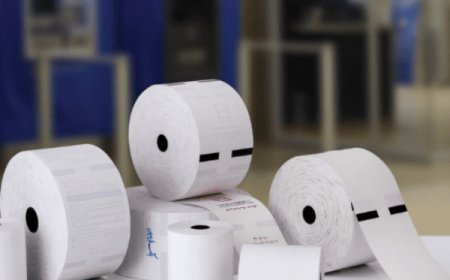Teething Toys for Puppies: What Works Best?
Discover the best teething toys for puppies to soothe sore gums and reduce chewing damage during their teething phase.

Welcoming a new puppy into your home is a joyful experience. With their boundless energy, curious nature, and adorable clumsiness, puppies quickly become beloved members of the family. However, any pet parent knows that raising a puppy comes with its challengesespecially during the teething phase. This critical developmental period can be uncomfortable and even painful for your furry friend. Thats where teething toys for puppies come into play.
Understanding what makes a great teething toy and how it benefits your pup is key to keeping them comfortable and preventing them from chewing on things they shouldn'tlike your shoes, furniture, or wires. In this comprehensive blog, well explore what works best when it comes to teething toys for puppies, the science behind teething, types of toys available, safety considerations, and how to choose the right one for your growing canine.
What Happens During Puppy Teething?
Before diving into toy recommendations, its important to understand what teething involves. Puppies are born without teeth, but their baby teethalso known as deciduous teethstart to come in at around three weeks of age. By the time theyre six to eight weeks old, most puppies have all 28 of their baby teeth.
The teething process doesnt stop there. Around the age of 12 to 16 weeks, puppies begin to lose their baby teeth as their adult teeth start to emerge. This process continues until theyre about six to seven months old and have their full set of 42 adult teeth.
During this time, teething can cause discomfort, irritation, and a strong urge to chew. Puppies will instinctively look for something to gnaw on to relieve the pressure in their gums. Without the right teething toys, theyll chew on whatever they findwhether it's safe or not.
Types of Teething Toys That Work Best
When selecting teething toys for puppies, its not one-size-fits-all. Different materials and designs serve different purposes. Lets break down the most popular types of toys and what makes them effective.
1. Soft Rubber Toys
Soft rubber toys are among the most popular options for teething puppies. They are durable yet gentle enough for sore gums. Their slightly squishy texture provides the resistance puppies crave when chewing, without causing harm.
Some designs include hollow centers where you can insert treats or a little peanut butter, encouraging your puppy to chew longer. Toys with ridges or bumps offer added relief by massaging the gums as your pup chews.
2. Freezable Toys
Cold can offer tremendous relief for teething pain. Many toys are designed to be frozen, which numbs the gums and reduces inflammation. Freezable toys come in various forms, from soft rubber rings to cloth toys soaked in water before being frozen.
These toys are especially useful during the peak teething periods, typically around 16 weeks, when discomfort is at its highest.
3. Rope Toys
Rope toys are a classic for a reason. Theyre excellent for chewing and also help clean your puppys teeth. The fibrous texture helps remove plaque and massage the gums. Just make sure the rope is tightly woven and doesn't fray easily, as loose strands can be a choking hazard.
Rope toys are also great for interactive play like tug-of-war, which helps with training and bonding.
What to Avoid in Teething Toys
While there are plenty of great options available, not all dog toys are created equalespecially for teething puppies. Safety is paramount, and its crucial to avoid materials and features that could harm your puppy.
1. Toys That Are Too Hard
Teething puppies have sensitive gums, and toys that are too hard can damage developing teeth or cause fractures. Avoid bones, antlers, and hard nylon toys unless specifically designed for puppies.
A general rule of thumb: if the toy hurts when you press it against your knee, its probably too hard for a puppys mouth.
2. Small Parts or Ingestible Materials
Always choose toys that are appropriately sized for your puppy. Avoid toys with small detachable parts that could be swallowed. Check toys regularly for wear and tear and replace them if they begin to break down.
If a toy becomes a choking hazard, its no longer safeno matter how much your puppy loves it.
3. Toxic Materials
Make sure the toy is made from non-toxic, BPA-free materials. Puppies chew and sometimes ingest parts of their toys, so safety is critical. Always check labels or product descriptions before buying.
How Teething Toys Aid in Behavioral Training
Beyond soothing sore gums, teething toys play a crucial role in shaping your puppys behavior. The right toy not only offers relief but also teaches your puppy what is acceptable to chew on.
Providing appropriate teething toys from an early age can prevent destructive chewing habits. When your puppy reaches for the table leg or your favorite sandals, redirect them to their toy. This reinforcement helps them learn boundaries and acceptable behaviors.
Additionally, teething toys can be used during crate training or when you need your pup to entertain themselves for a short period. By keeping them engaged, toys reduce anxiety and support healthy mental development.
Teething Toys and Dog Grooming: A Helpful Connection
You might not immediately associate teething toys with dog grooming, but the two are more connected than you think. Grooming isnt just about brushing or bathingit includes dental care too.
Teething toys can help maintain your puppys oral hygiene by reducing plaque buildup and keeping their mouths clean. This is especially important because puppies may not tolerate toothbrushes right away. Using toys as an initial tool for dental health is a smart grooming strategy.
Additionally, chewing helps stimulate saliva production, which naturally cleanses the mouth and reduces bacteria.
Introducing Teething Toys: Tips for Success
Simply buying a toy and handing it to your puppy may not yield instant results. Here are some tips to make teething toys work effectively:
1. Supervised Playtime
Always supervise your puppy during the first few play sessions with any new toy. This helps you gauge their interest and ensure the toy is safe and durable.
If your puppy shows signs of trying to swallow parts of the toy or if they become too aggressive with it, consider switching to a different type.
2. Rotate Toys Regularly
Just like humans, puppies can get bored with the same toys. Rotate a few different types of teething toys to maintain their interest. This also gives you the chance to clean each toy regularly.
Rotating toys keeps the experience novel and mentally stimulating, reducing the chances of your puppy turning to household objects out of boredom.
3. Use Positive Reinforcement
When your puppy chews on their toy instead of a forbidden object, reward them with praise or a treat. This helps reinforce the idea that toys are for chewing and strengthens good behavior.
Positive reinforcement is a powerful tool in your puppy's early education and lays the foundation for future training success.
Long-Term Benefits of the Right Teething Toys
Investing in good teething toys isnt just about surviving the puppy stageit sets the stage for a lifetime of healthy habits. Puppies who learn to chew appropriately are less likely to develop destructive behaviors later on. Moreover, regular chewing strengthens jaw muscles and helps keep adult teeth clean.
Teething toys can also serve as comfort items, reducing separation anxiety and providing a familiar outlet for stress relief. They encourage independence while still offering engagement and stimulation.
Teething Myths to Ignore
Theres a lot of well-meaning but misleading advice floating around when it comes to teething. Lets set the record straight on a few common myths.
Myth 1: Puppies Don't Need ToysThey'll Grow Out of Chewing
While teething is temporary, chewing is a lifelong behavior in dogs. Puppies dont grow out of chewing; they simply develop better habits when trained. Having the right dog toys available helps reinforce these habits.
Myth 2: Ice Cubes Alone Are Enough
While ice cubes can offer temporary relief, they melt quickly and can be a choking hazard. Frozen teething toys are a safer and more effective solution.
Myth 3: All Toys Are Safe
Just because something is sold as a pet toy doesnt mean its safe for teething. Always check material safety, size, and user reviews before introducing a new toy to your puppy.
Final Thoughts
The teething stage is a challenging yet rewarding phase in your puppys development. By understanding the process and providing the right teething toys, youre not only easing your puppys discomfort but also shaping positive behaviors for the future.
Remember, no single toy fits all puppies. Pay attention to your pups preferences, chewing strength, and size to find the perfect match. A good mix of soft rubber, freezable options, and rope toys will likely do the trick.
Incorporating quality teething toys can also support broader aspects of your puppys well-being, including hygiene and behavioral training. From a dog grooming perspective, these toys serve as an excellent first step in maintaining oral health.
Above all, be patient. Teething doesnt last forever, and with the right approach, you and your puppy can get through it with minimal damageand maybe even a stronger bond. So stock up on those chew toys, clear the shoe rack, and let the teething games begin!
















![Top 9 Real Estate Mobile App Developers in Riyadh, Saudi Arabia [2025 Edition]](https://www.biphoo.uk/uploads/images/202507/image_430x256_6879d0d524335.jpg)



















